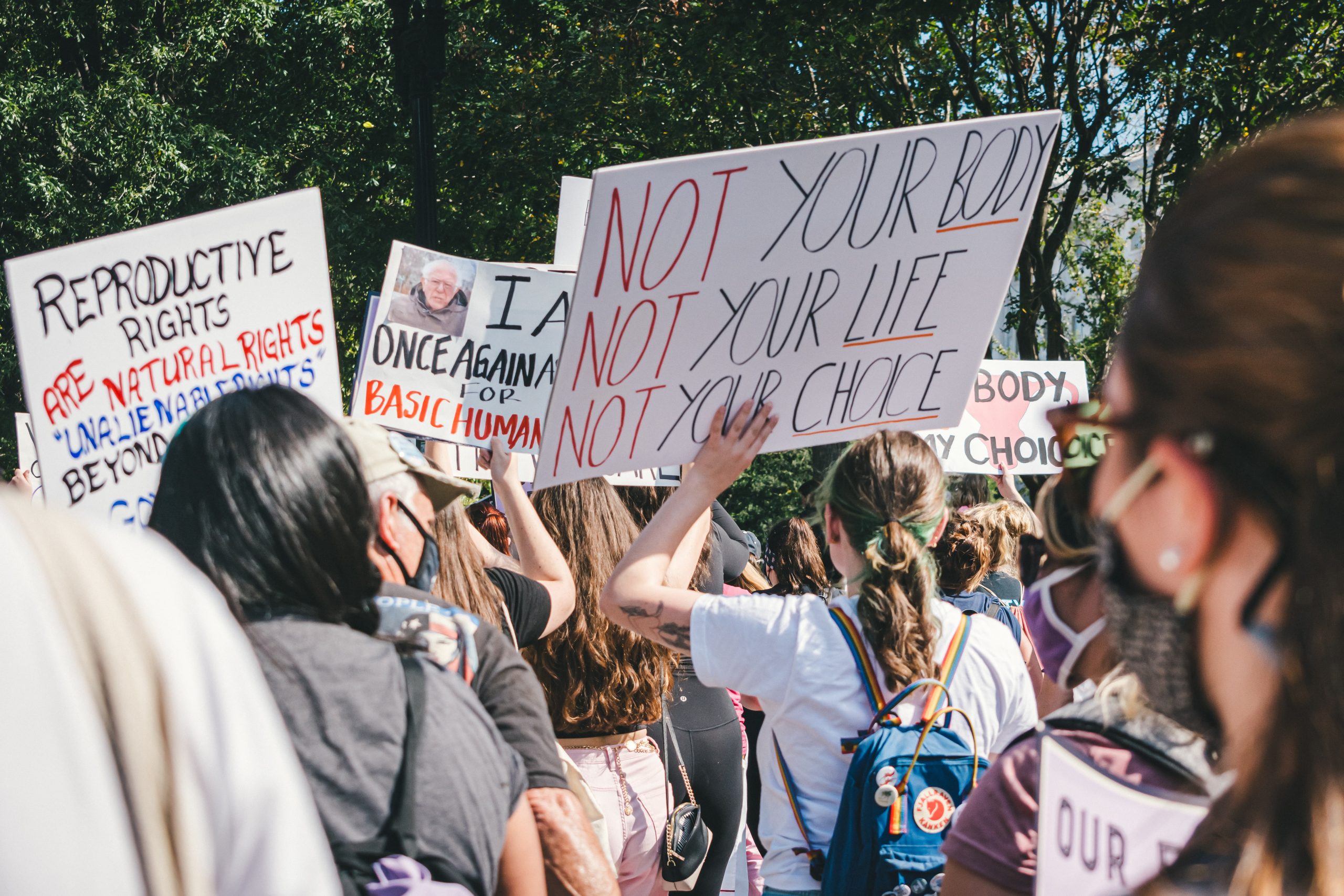When Dobbs v. Jackson Women’s Health Organization was decided in June 2022, it was the final confirmation of what had already become known: that the Supreme Court wanted to make the right to abortion (also known as Roe v. Wade) “a states’ rights issue.” (It feels important to note here that states’ rights is not just a calling card of the pro-life crowd — it was also an argument used by the pro-slavery camp back in the 1800s).
The leaked draft of the decision, which was publicized a mere month before Dobbs was finalized, kicked off what was dubbed by activists as “The Summer of Rage.” In their minds, giving individual states the ability to restrict abortion access was not only dangerous from a health perspective, but also because of the legal precedent it set. As NPR explained in the immediate aftermath of the ruling, “Other Supreme Court precedents securing ‘settled freedoms involving bodily integrity, familial relationships, and procreation’ may now be in danger, such as rulings backing contraception rights and same-sex marriage.”
Thus the summer of rage. With abortion rights on the chopping block in several states and other civil rights such as gay marriage potentially in danger down the road, things are complicated in the world right now. It has become incredibly hard to keep track of all the Roe-related issues unfolding at the moment — and that’s where this guide comes in. Whether you’re looking for background information on where this all started, seeking state-by-state updates on abortion access, or trying to figure out the ins and outs of protest legality, all of it is compiled here.
Section I: How Did We Get Here?
It started in 1969.
A pregnant woman named Norma McCorvey wanted to get an abortion but wasn’t able to because she lived in Texas, a state that — at the time — would not allow a person with a uterus to get an abortion unless it was deemed necessary to save the mother’s life. McCorvey was not physically endangered by the pregnancy; she just did not want to be pregnant. After meeting McCorvey and hearing her story, a pair of lawyers decided that her circumstances offered the perfect opportunity to challenge Texas’ abortion laws.
To protect her identity, they gave McCorvey a pseudonym: Jane Roe, the titular plaintiff of Roe v. Wade. The case traveled from Texas to the Supreme Court of the United States over a number of years before eventually being decided in 1973. The Court found that first-and-second trimester abortions are protected under the right to privacy guaranteed in the United States Constitution. (This is the same “right to privacy” mentioned before, which was also used to justify the legalization of same-sex marriage nationwide.)
This ruling stood unhindered until 1992, when the Supreme Court ruled on another abortion-related case, Planned Parenthood v. Casey. It was at this point that the idea of an “undue burden” became relevant. In a 5-4 ruling, the Supreme Court found that states could impose some restrictions on abortion, so long as those restrictions did not impose “an undue burden” on the person seeking an abortion.
That was where abortion stood in the United States until a mere two months ago. Now, individual state governments have the authority to restrict people with uterus’s ability to get an abortion, regardless of trimester or the burdens placed on the pregnant person in question. It is, in simpler terms, a states’ rights issue.
Section II: What’s Happening In My State?
Since Dobbs, every state has adopted a slightly different set of abortion laws. Some places have made no changes to their pre-Dobbs practices, while other states immediately implemented incredibly strict laws as soon as Dobbs was handed down. The Guttmacher Institute offers an interactive map detailing the laws in every individual state and is a good first step when trying to figure out what laws exist where.
However, one thing that the map does not show is larger patterns and interesting trends across the country. For example, as one might expect, the South is the region of the United States with the most restrictive abortion laws overall. Texas, Louisiana, Mississippi, Alabama, Missouri and Kentucky have passed laws identified by Guttmacher as being the “most restrictive,” with Tennessee, Georgia and South Carolina laws falling into the “very restrictive” category and Florida listed as “restrictive.”
In contrast, states that are traditionally pretty blue by political party standards — such as California, Washington, Oregon and Illinois — are on the opposite end of the spectrum, labeled as “protective” by Guttmacher. Oregon, in fact, is presently the most “protective” state in the country for abortion access.
One specific case that has made news in recent weeks is Kansas, a state that Donald Trump won in the 2020 presidential election by 20 points. A proposed abortion amendment was put to a vote on Aug. 2; if it had passed, as many expected it to, it would have opened the door for the Kansas state legislature to pass a complete ban on abortion.
Instead, the amendment failed. Almost 60% of voters rejected the proposal, which would have said: “There was no right to an abortion in the state.” It was a significant blow to the anti-abortion constituency in the state and across the country at large.
Numerous other states will likely vote on similar amendments in the near future, and while what happened in Kansas might not be repeated, it is a sign of hope in what otherwise seems like a bleak time for those fighting for abortion rights.
Section II: I Want To Get Involved. Where Do I Start?
If you are interested in protesting, the most important thing is to listen to those leading the protest or demonstration itself. The organizers are very knowledgeable, and many of them do this work for a living. Make sure their instructions are clear and follow them to the letter.
It is crucial to know what rights protesters have, and what they should do to protect themselves. The American Civil Liberties Union (ACLU) has published an excellent protest guide that breaks down the rights that protesters have in a variety of different situations. Some states might have additional regulations as well, so looking for those is always a good idea.
Another option for getting involved is donating funds to local abortion networks. The National Network of Abortion Funds has a map on its website that shows individual locations of abortion funds in every state. Well-known national organizations such as Planned Parenthood normally receive much more funding than local movements, so branching out to some of the lesser-known abortion funds can have a significant impact on individual communities.
Finally, there is always a place for activism on social media and in conversations. While these avenues might not feel like the most useful or impactful, they are also much more feasible options for many people who are unable to protest or donate, and they truly can make a difference on a one-to-one basis.
The United States is currently experiencing what can only be described as unprecedented times — because while abortion access has been restricted before, the vast majority of the nation does not know what it is like to live without Roe v. Wade. As communities learn to navigate this post-Roe world, it is important to remain informed and engaged; and this guide aims to be a place for people to start.















